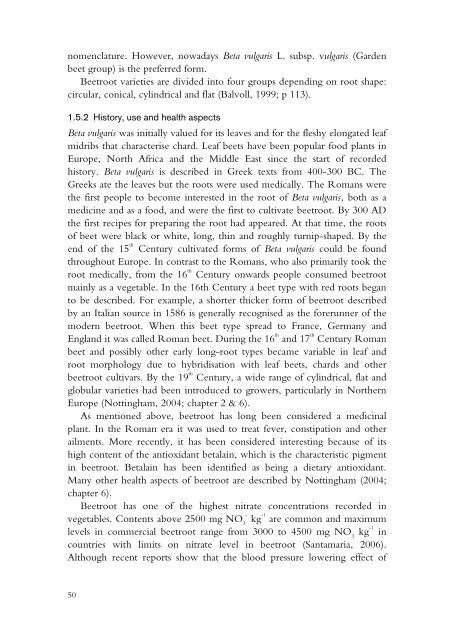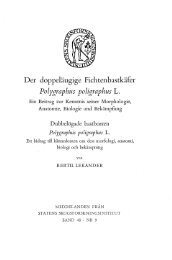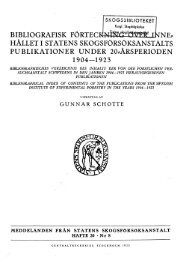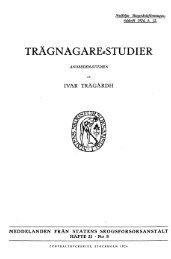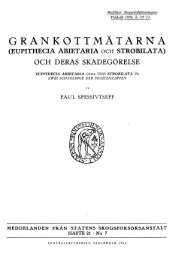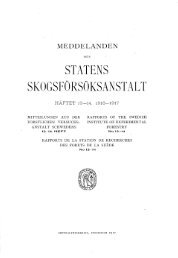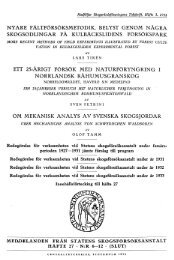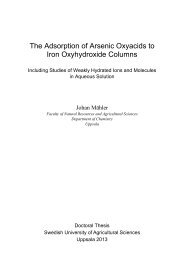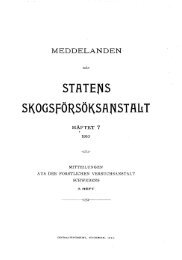Plant-Based Biogas Production for Improved Nutrient Management ...
Plant-Based Biogas Production for Improved Nutrient Management ...
Plant-Based Biogas Production for Improved Nutrient Management ...
Create successful ePaper yourself
Turn your PDF publications into a flip-book with our unique Google optimized e-Paper software.
nomenclature. However, nowadays Beta vulgaris L. subsp. vulgaris (Garden<br />
beet group) is the preferred <strong>for</strong>m.<br />
Beetroot varieties are divided into four groups depending on root shape:<br />
circular, conical, cylindrical and flat (Balvoll, 1999; p 113).<br />
1.5.2 History, use and health aspects<br />
Beta vulgaris was initially valued <strong>for</strong> its leaves and <strong>for</strong> the fleshy elongated leaf<br />
midribs that characterise chard. Leaf beets have been popular food plants in<br />
Europe, North Africa and the Middle East since the start of recorded<br />
history. Beta vulgaris is described in Greek texts from 400-300 BC. The<br />
Greeks ate the leaves but the roots were used medically. The Romans were<br />
the first people to become interested in the root of Beta vulgaris, both as a<br />
medicine and as a food, and were the first to cultivate beetroot. By 300 AD<br />
the first recipes <strong>for</strong> preparing the root had appeared. At that time, the roots<br />
of beet were black or white, long, thin and roughly turnip-shaped. By the<br />
end of the 15 th Century cultivated <strong>for</strong>ms of Beta vulgaris could be found<br />
throughout Europe. In contrast to the Romans, who also primarily took the<br />
root medically, from the 16 th Century onwards people consumed beetroot<br />
mainly as a vegetable. In the 16th Century a beet type with red roots began<br />
to be described. For example, a shorter thicker <strong>for</strong>m of beetroot described<br />
by an Italian source in 1586 is generally recognised as the <strong>for</strong>erunner of the<br />
modern beetroot. When this beet type spread to France, Germany and<br />
England it was called Roman beet. During the 16 th and 17 th Century Roman<br />
beet and possibly other early long-root types became variable in leaf and<br />
root morphology due to hybridisation with leaf beets, chards and other<br />
beetroot cultivars. By the 19 th Century, a wide range of cylindrical, flat and<br />
globular varieties had been introduced to growers, particularly in Northern<br />
Europe (Nottingham, 2004; chapter 2 & 6).<br />
As mentioned above, beetroot has long been considered a medicinal<br />
plant. In the Roman era it was used to treat fever, constipation and other<br />
ailments. More recently, it has been considered interesting because of its<br />
high content of the antioxidant betalain, which is the characteristic pigment<br />
in beetroot. Betalain has been identified as being a dietary antioxidant.<br />
Many other health aspects of beetroot are described by Nottingham (2004;<br />
chapter 6).<br />
Beetroot has one of the highest nitrate concentrations recorded in<br />
- -1<br />
vegetables. Contents above 2500 mg NO kg are common and maximum<br />
3<br />
levels in commercial beetroot range from 3000 to 4500 mg NO 3 kg -1<br />
countries with limits on nitrate level in beetroot (Santamaria, 2006).<br />
Although recent reports show that the blood pressure lowering effect of<br />
50<br />
in


